
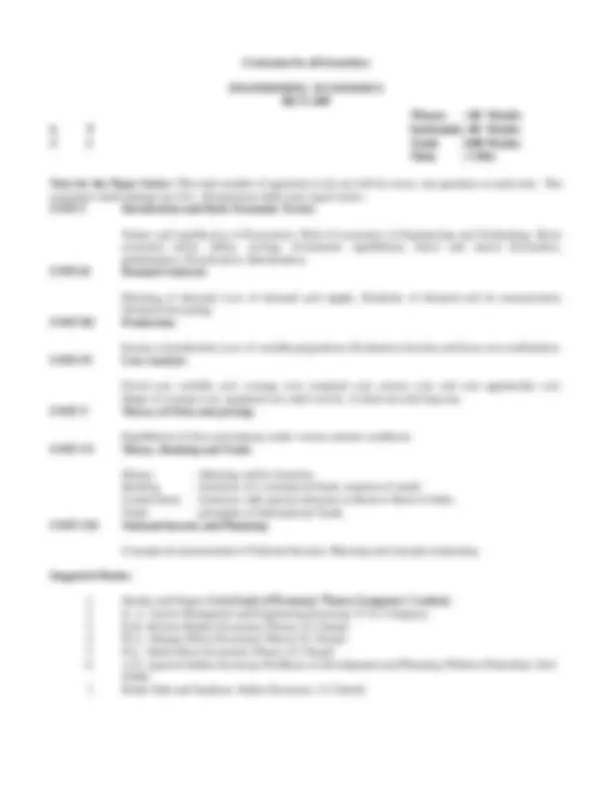
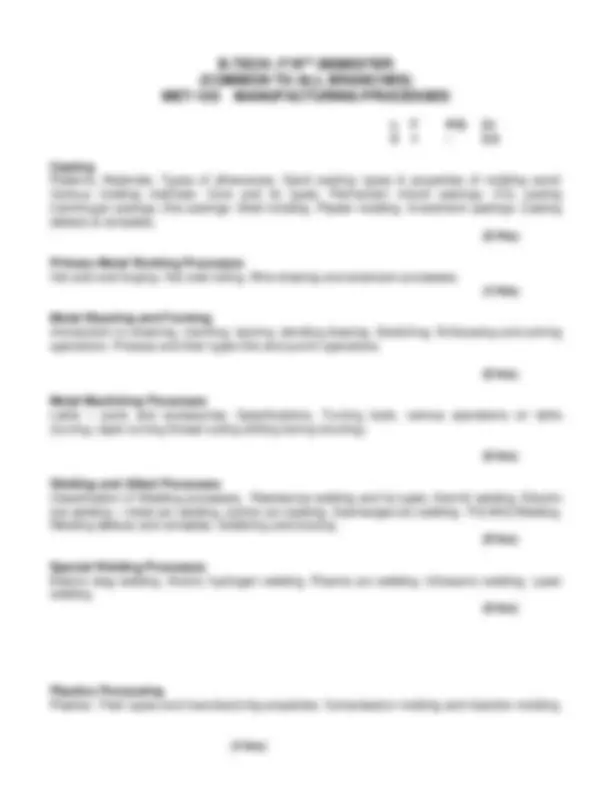
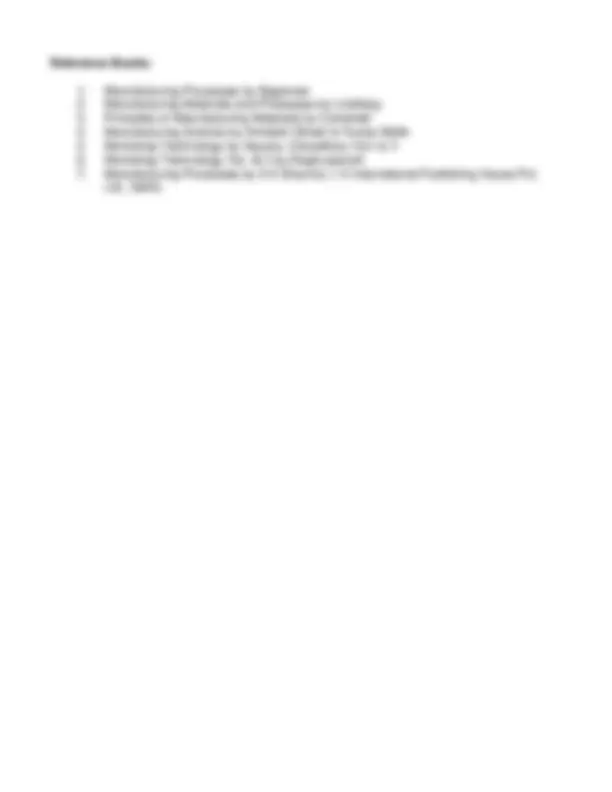
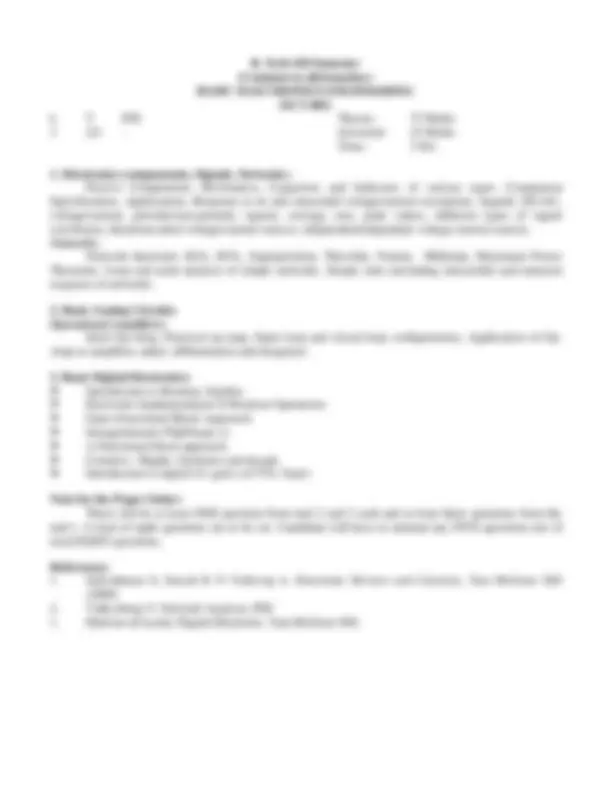
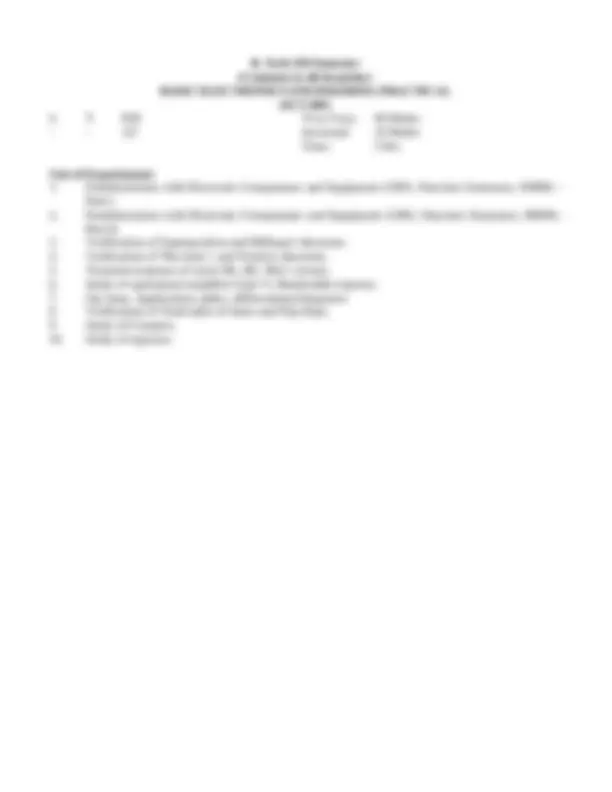
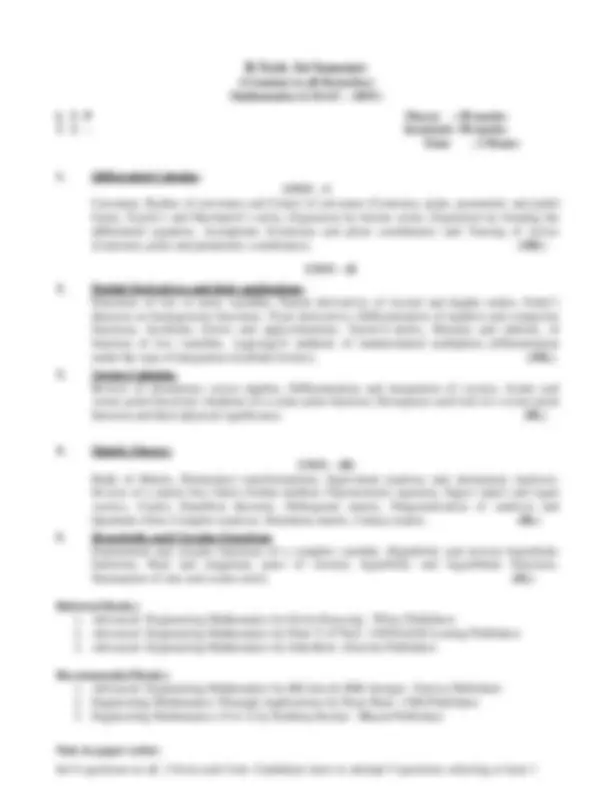
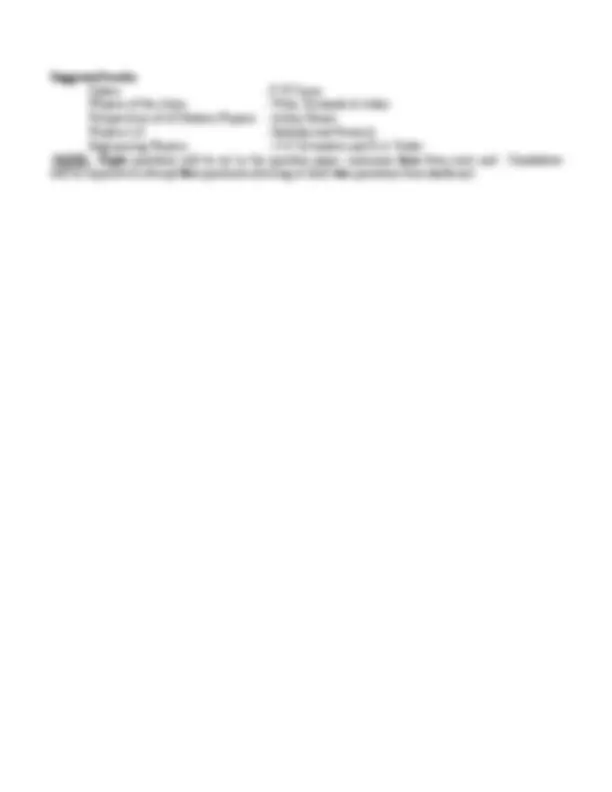
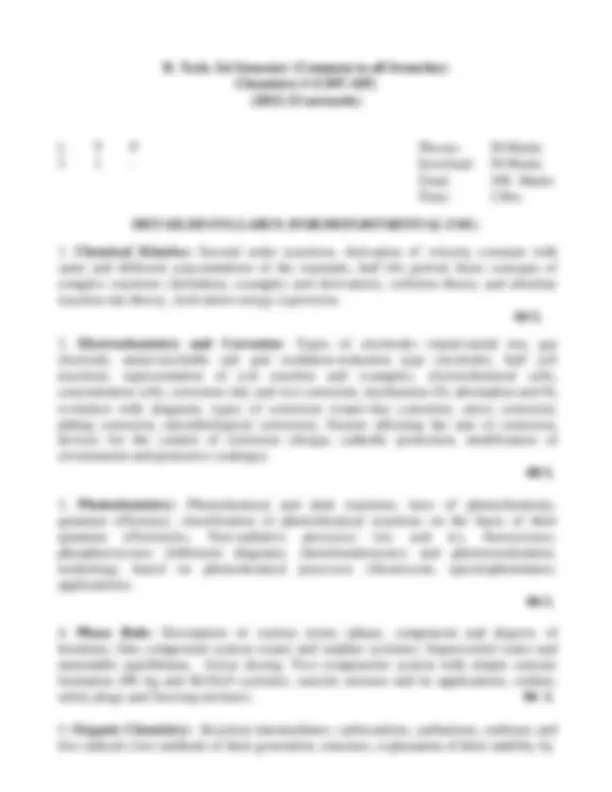
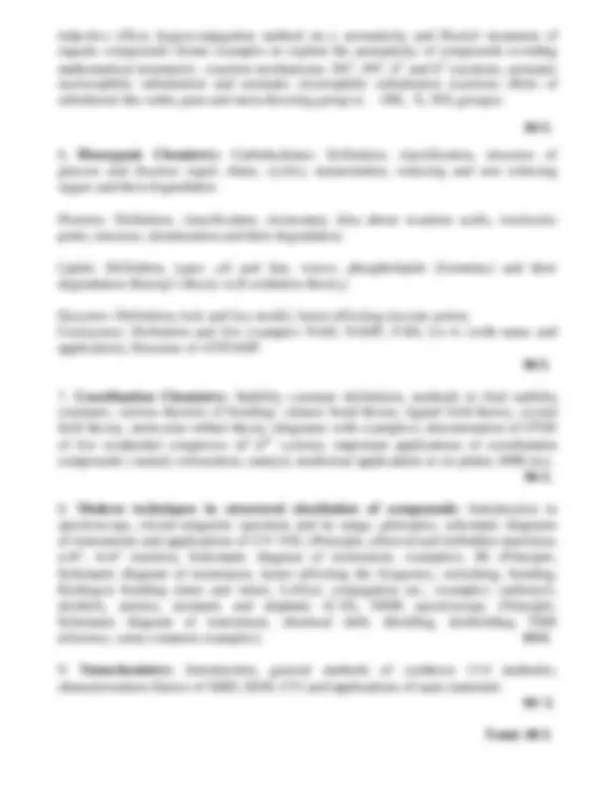
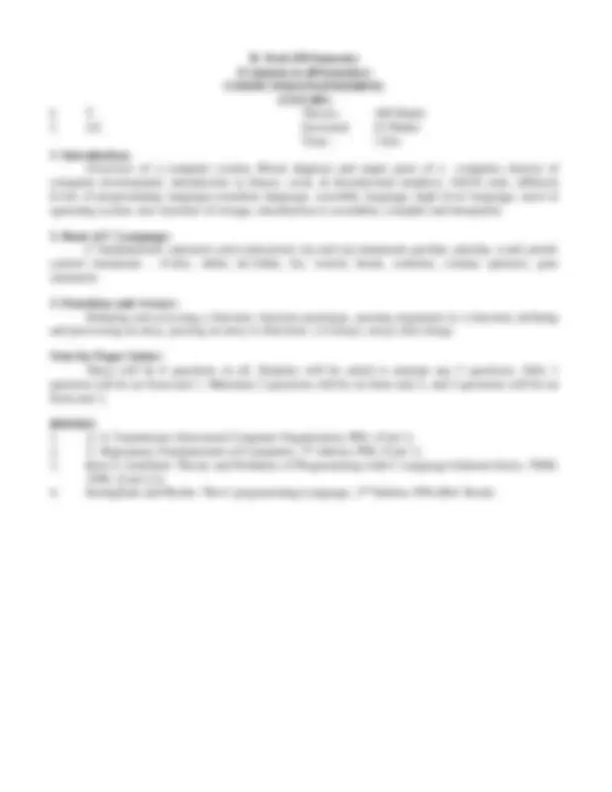
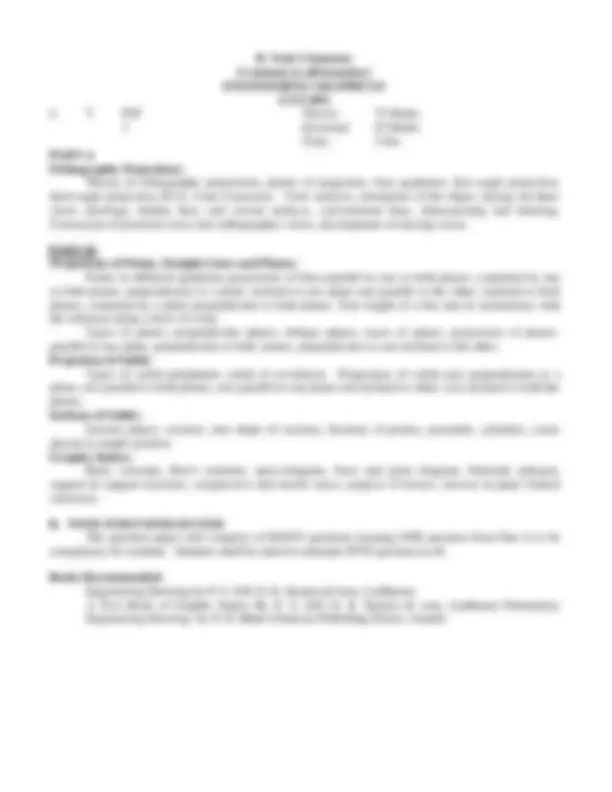
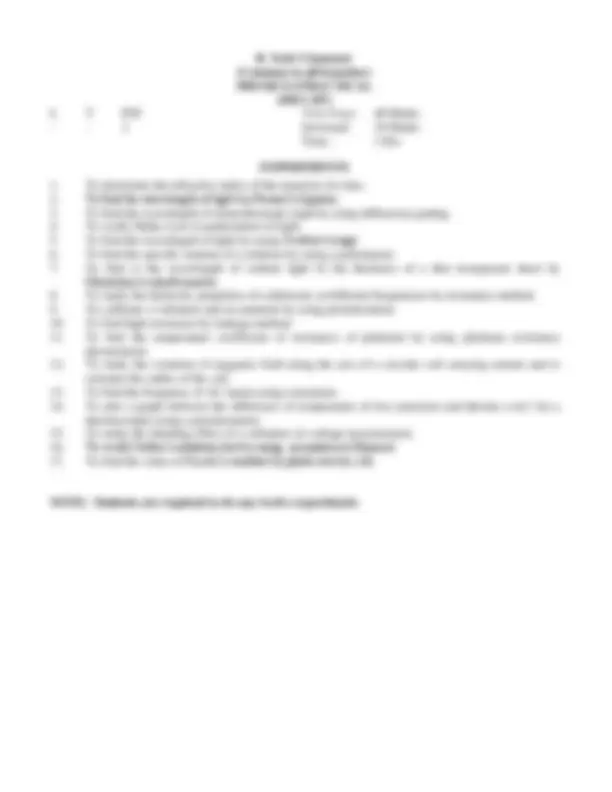
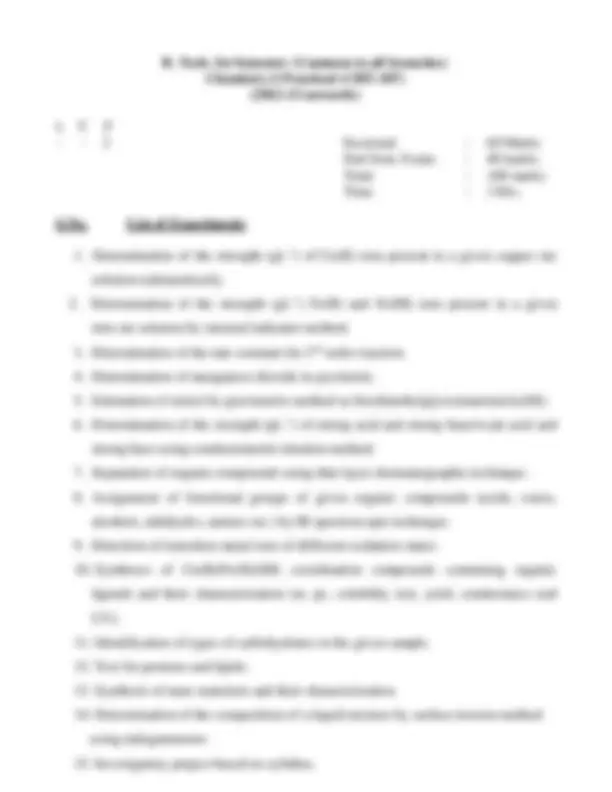
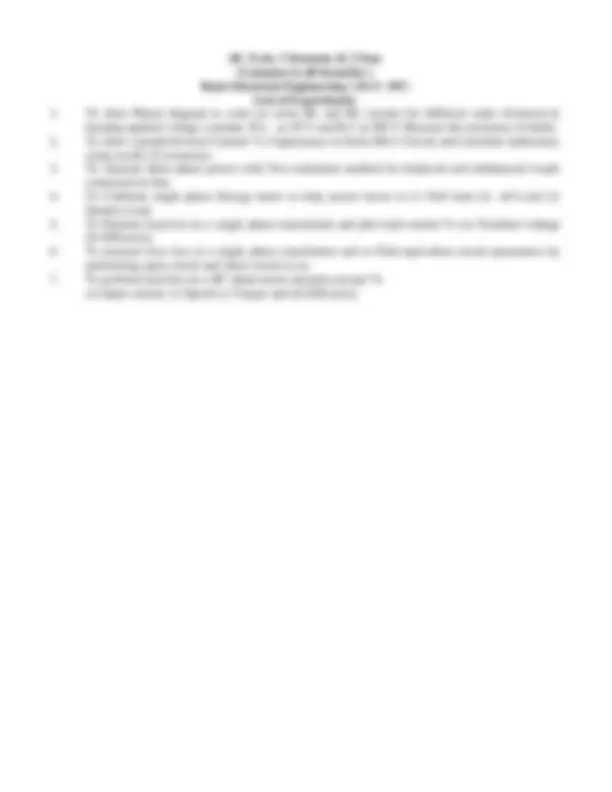
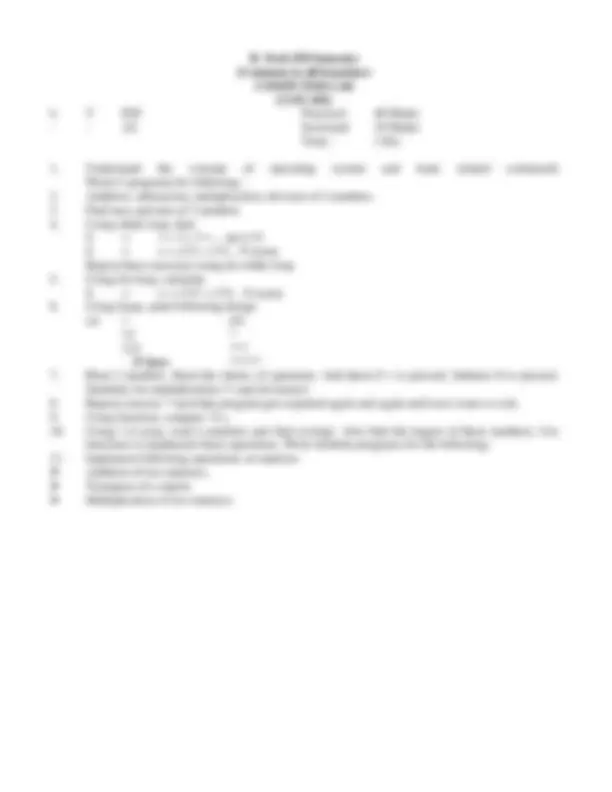
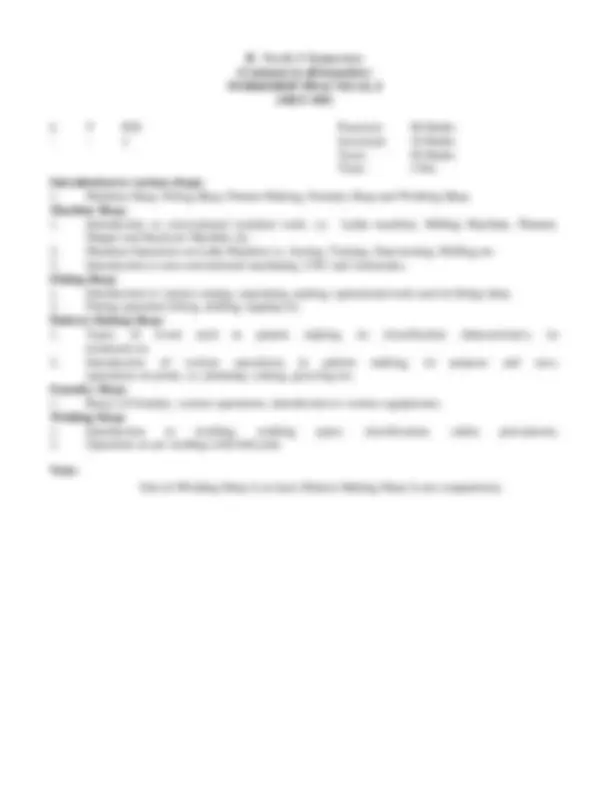
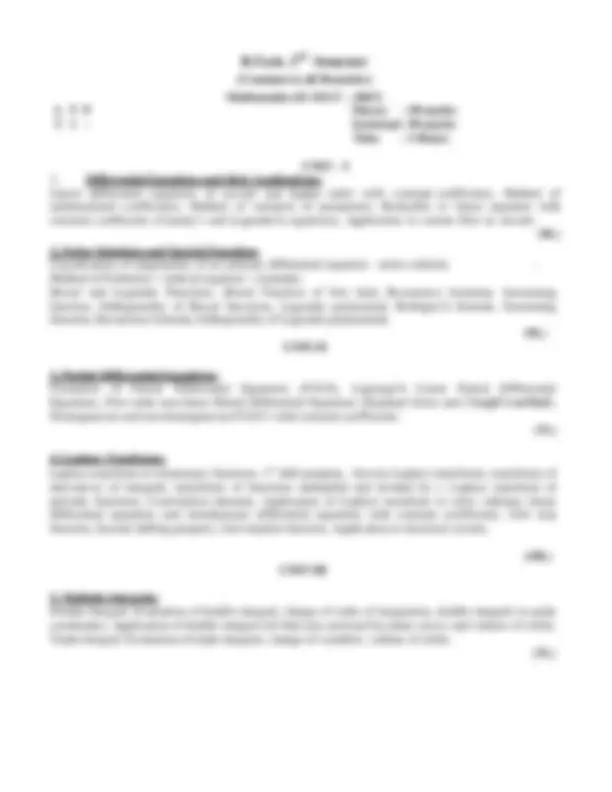
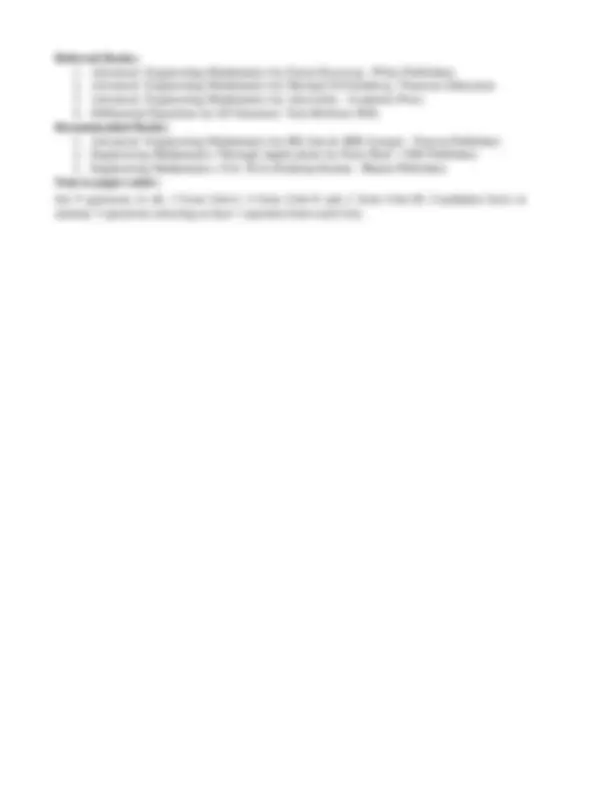
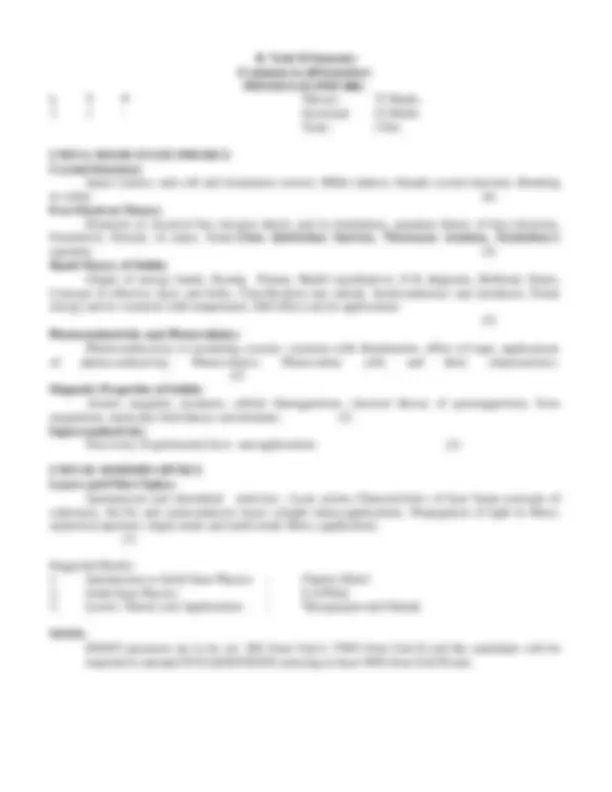
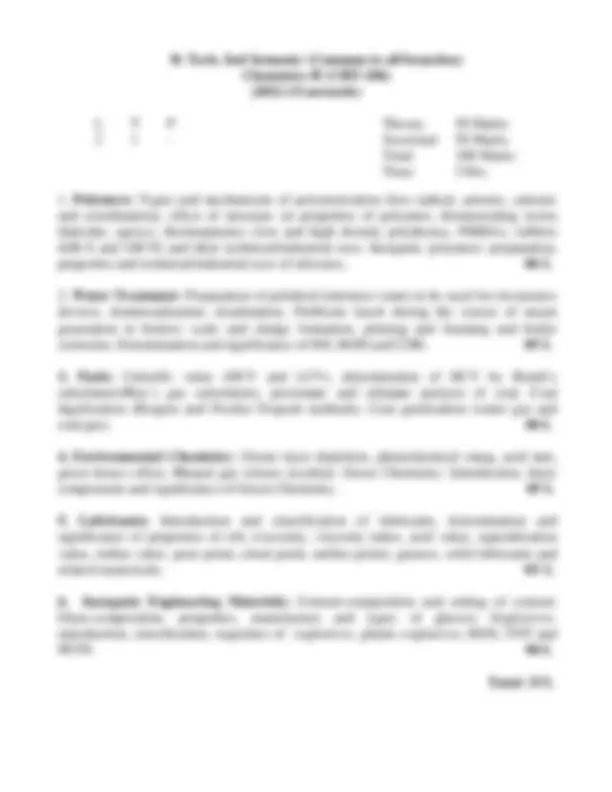
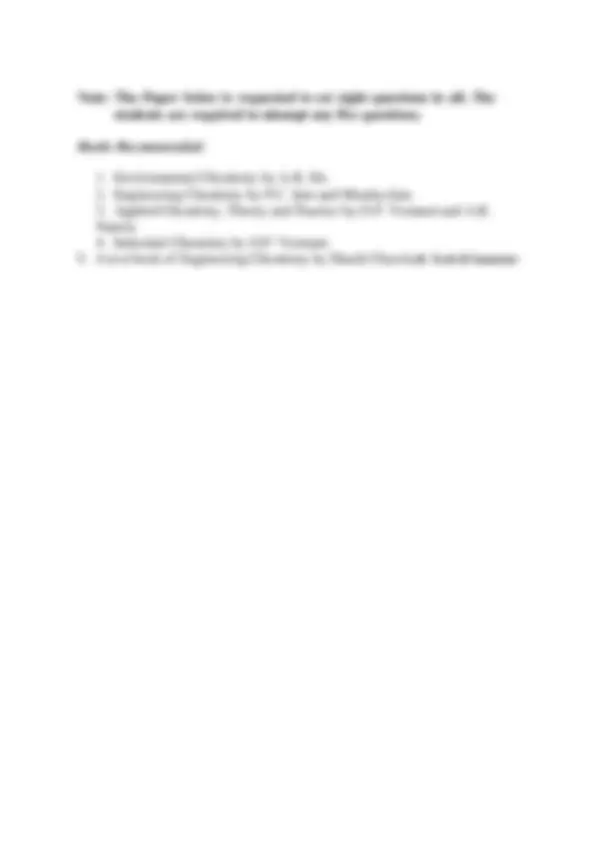
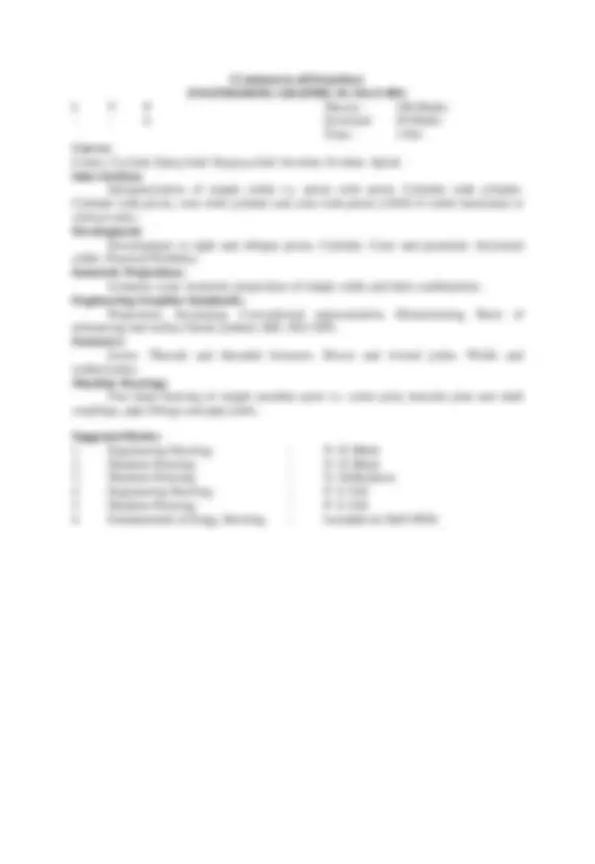
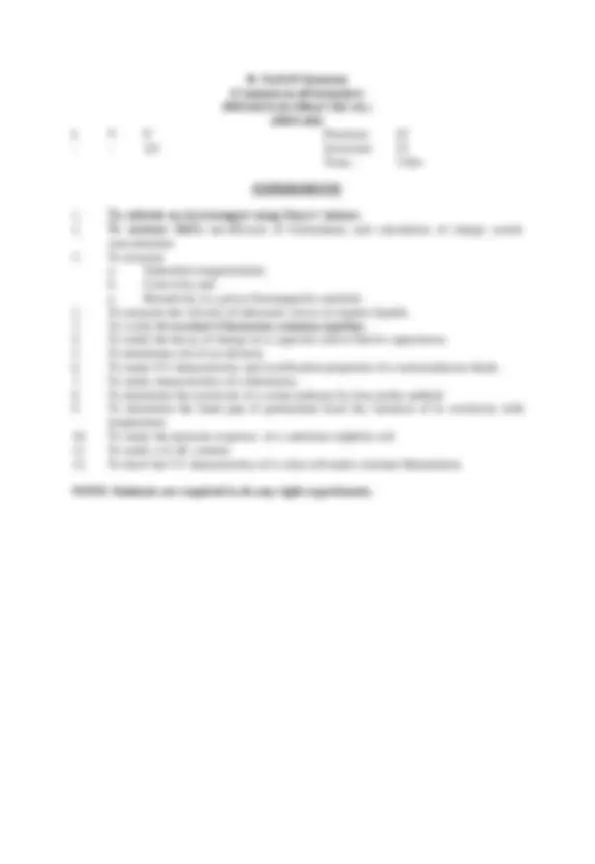
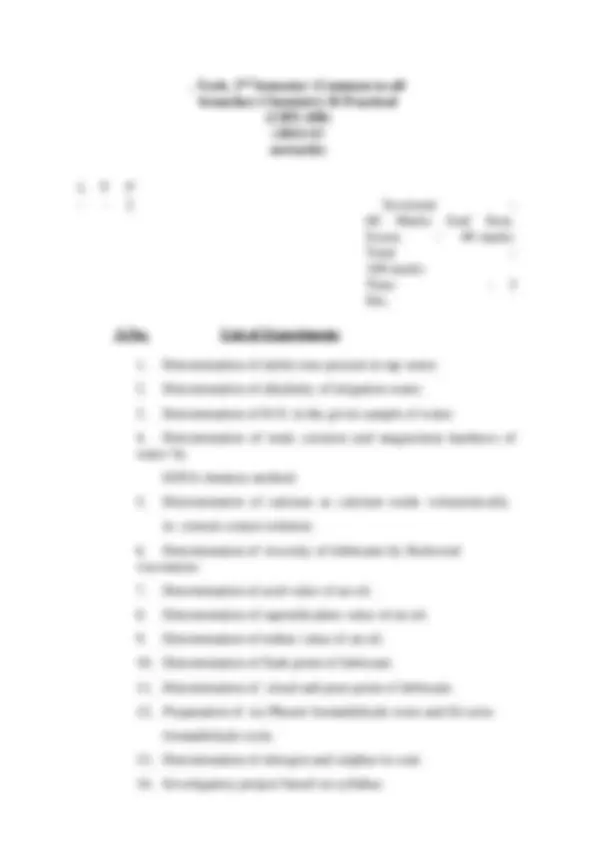
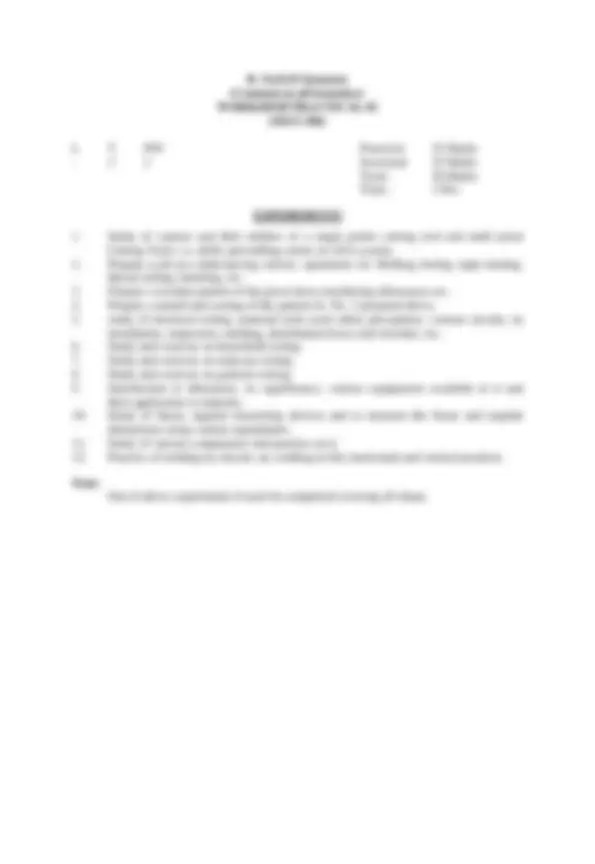
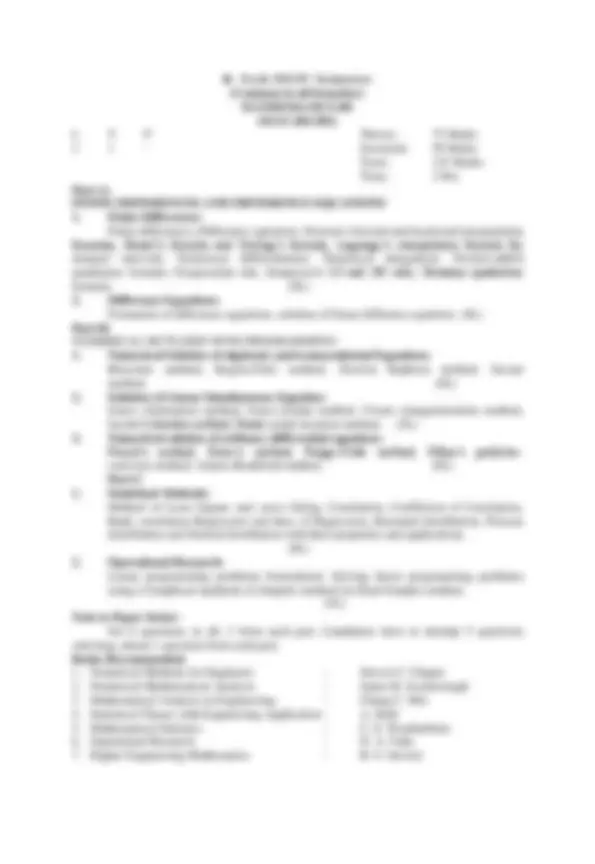
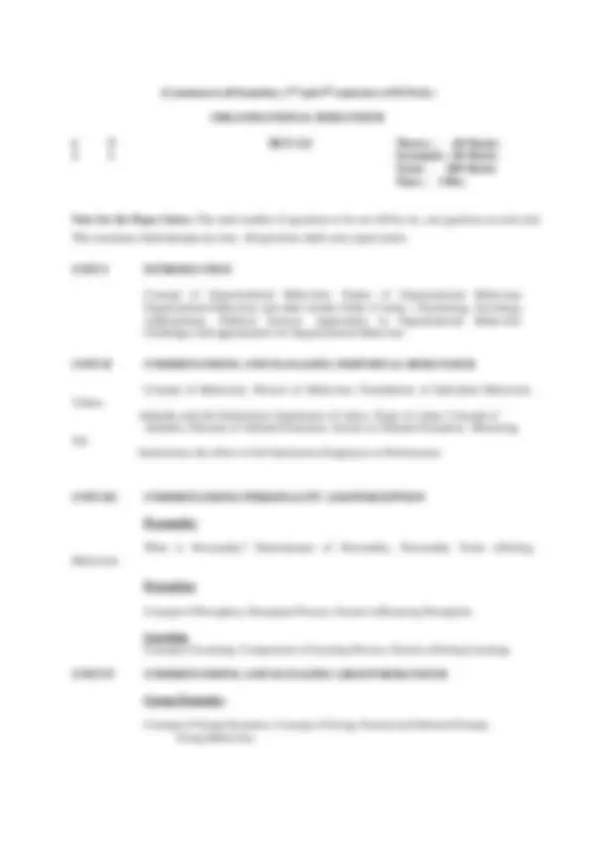
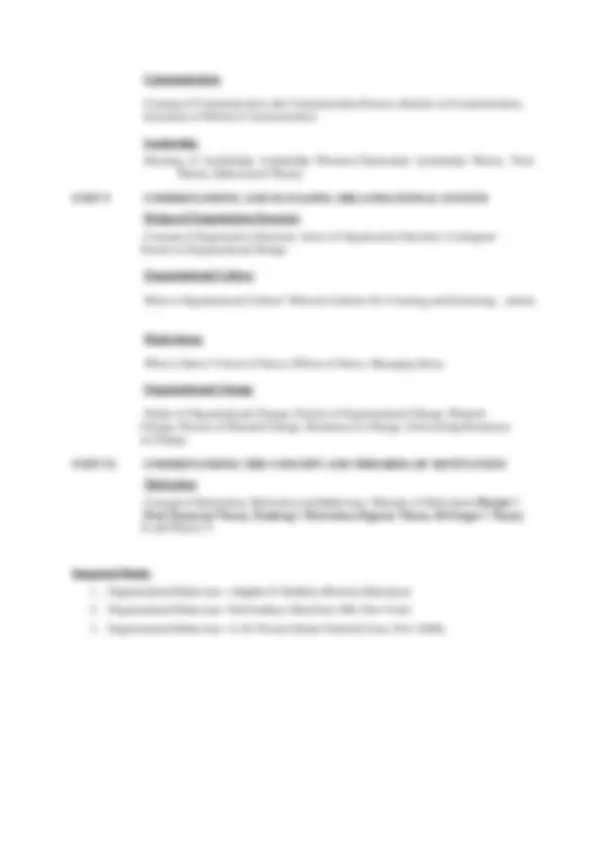


Study with the several resources on Docsity

Earn points by helping other students or get them with a premium plan


Prepare for your exams
Study with the several resources on Docsity

Earn points to download
Earn points by helping other students or get them with a premium plan
Community
Ask the community for help and clear up your study doubts
Discover the best universities in your country according to Docsity users
Free resources
Download our free guides on studying techniques, anxiety management strategies, and thesis advice from Docsity tutors
An examination schedule and teaching duration for various engineering and science courses, including engineering economics, manufacturing processes, communication skills in english, basic electronics engineering, basic electronics engineering practical, mathematics-i, physics-i, chemistry-i, basic electrical engineering, computer engineering, engineering graphics-i, physics-ii practical, and chemistry-ii practical. The document also includes information on the number of lectures, tutorials, practicals, and vivas for each subject.
What you will learn
Typology: Study notes
1 / 36

This page cannot be seen from the preview
Don't miss anything!





























SCHEME OF EXAMINATION FOR B.TECH DEGREE I Semester Examination (Common to all Branches) Course No. Subject Teaching Schedule Examination Schedule Duration L T P/D Total Theory Sessional Practical/ of Exam Viva Total HUT- 109 Engineering Economics OR 3 1 - 4 60 40 100 3 MET- 103 Manufacturing Processes 3 1 - 4 - - - - HUT- 107 Communication Skills In English OR 2 2 - 4 60 40 100 3 ECT- 103 Basic Electronics Engineering 2 2/2 - 3 75 25 100 3 ECT- 105 Basic Electronics Engineering Practical - - 2/2 1 - 10 40 50 3 MAT- 10 5T Mathematics-I 3 2 - 5 50 50 100 3 PHT- 105 Physics-I 3 1 - 4 100 25 125 3 CHT- 105 Chemistry-I 3 1 - 4 50 50 100 3 ELT- 105 Basic Electrical Engineering OR 2 2/2 - 3 60 40 100 3 COT- 101 Computer Engineering 2 2/2 - 3 - - - CET- 103 Engineering Graphics-I - - 3 3 75 25 100 4 PHT- 107 Physics-1 Practical - - 2 2 - 10 40 50 3 CHT- 107 Chemistry-I Practical - - 2 2 - 60 40 100 3 ELT- 107 Basic Electrical Engineering - - 3 3 - 60 40 100 3 COT- 103 Computer Lab.* - - 2/2 1 - - - - - MET- 105 Workshop Practical-I - - 3 3 - 10 40 50 3 16/16 7/8 12/11 35 575/600 225/240 200/160 1000 **HUT-109 and ECT-103, 105 will be offered to first half of the students strength, MET-103and HUT-107 will be offered to second half of the students strength. Similar procedure for (ELT-105,ELT-107) and (COT-101,COT-103) will be adopted.
SCHEME OF EXAMINATION FOR B.TECH DEGREE II Semester Examination (Common to all Branches) Course No. Subject Teaching Schedule Examination Schedule Duration L T P/D Total Theory Sessiona of Exam l Practica l/Viva Total MET- 103 Manufacturing Processes OR 3 1 - 4 75 25 - 100 3 HUT- 109 Engineering Economics 3 1 - 4 - - - - - ECT- 103 Basic Electronics Engineering 2 2/2 - 3 75 25 - 100 3 ECT- 105 Basic Electronics Engineering Practical OR
B.TECH. Ist/IInd^ SEMESTER (COMMON TO ALL BRANCHES) MET- 103 MANUFACTURING PROCESSES L T P/D Cr 3 1 - 3. Casting Patterns, Materials, Types of allowances, Sand casting: types & properties of molding sand: Various molding methods: Core and its types. Permanent mould castings. CO 2 casting Centrifugal castings. Die castings: Shell molding. Plaster molding. Investment castings. Casting defects & remedies. ( 6 Hrs ) Primary Metal Working Processes Hot and cold forging. Hot cold rolling. Wire drawing and extension processes. ( 4 Hrs ) Metal Shearing and Forming Introduction to shearing, notching. lancing. bending drawing. Stretching. Embossing and coining operations. Process and their types Die and punch operations. ( 6 hrs ) Metal Machining Processes Lathe – parts and accessories. Specifications, Turning tools, various operations on lathe (turning, taper turning thread cutting drilling boring knurling). ( 6 hrs ) Welding and Allied Processes Classification of Welding processes, Resistance welding and its types, thermit welding. Electric are welding – metal arc welding, carbon arc welding. Submerged arc welding. TIG MIG.Welding. Welding defects and remedies. Soldering and brazing. ( 8 hrs ) Special Welding Processes Electro stag welding. Atomic hydrogen welding. Plasma arc welding. Ultrasonic welding. Laser welding. ( 6 hrs ) Plastics Processing Plastics. Their types and manufacturing properties. Compression molding and Injection molding. ( 4 hrs )
Reference Books:
at the end of each chapter. 4x5 (20) UNIT-II 1. TEN prefixes, suffixes and bases, to be given. The students shall be required to form TEN words, one with each. (5)
B. Tech I/II Semester (Common to all branches) BASIC ELECTRONICS ENGINEERING (ECT-l03) L T P/D Theory : 75 Marks 2 2/2 - Sessional: 25 Marks Time : 3 Hrs
1. Electronics componenets, Signals, Networks: Passive Components: Resistances, Capacitors and Inductors of various types. Component Specifications, Applications, Response to dc and sinusoidal voltage/current excitations. Signals: DC/AC, voltage/current, periodic/non-periodic signals, average, rms, peak values, different types of signal waveforms, Ideal/non-ideal voltage/current sources, independent/dependent voltage current sources. Networks: Network theorems: KCL, KVL, Superposition, Thevehin, Norton, Milliman, Maximum Power Theorems. Loop and node analysis of simple networks. Steady state (including sinusoidal) and transient response of networks. 2. Basic Analog Circuits: Operational Amplifiers: Ideal Op-Amp, Practical op-amp, Open loop and closed loop configurations, Application of Op- Amp as amplifier, adder, differentiator and integrator. 3. Basic Digital Electronics: Introduction to Boolean Algebra Electronic Implementation of Boolean Operations Gates-Functional Block Approach Storagelements-FlipFloops-A A Functional block approach Counters : Ripple, Up/down and decade Introduction to digital 1C gates (of TTL Type) Note for the Paper Setter: There will be at least ONE question from unit 2 and 3 each and at least three questions from the unit l. A total of eight questions are to be set. Candidate will have to attempt any FIVE questions out of total EIGHT questions. References:
B.Tech. Ist Semester (Common to all Branches) Mathematics-I (MAT – 105 T) L T P Theory : 50 marks 3 2 - Sessional : 50 marks Time : 3 Hours
1. Differential Calculus : UNIT – I Curvature, Radius of curvature and Centre of curvature (Cartesian, polar, parametric and pedal form), Taylor’s and Maclaurin’s series, Expansion by known series, Expansion by forming the differential equation, Asymptotes (Cartesian and ploar coordinates) and Tracing of curves (Cartesian, polar and parametric coordinates). **(1 0 L) UNIT – II
question from each Unit.
Suggested books: Optics - F.W.Sears Physics of the Atom - Wehr, Richards & Adair Perspectives of of Modern Physics - Arthur Beiser Physics-I,II - Halliday and Resnick Engineering Physics - S.K.Srivastava and R.A.Yadav NOTE: Eight questions will be set in the question paper, minimum four from each unit. Candidates will be required to attempt five questions selecting at least two questions from each unit.
B. Tech. Ist Semester (Common to all branches) Chemistry-I (CHT- 105 ) ( 2012 - 13 onwards) L T P Theory: 50 Marks 3 1 - Sessional: 50 Marks Total: 100 Marks Time: 3 Hrs. DETAILED SYLLABUS (FOR DEPARTMENTAL USE)
Note: The Paper Setter is requested to set eight questions in all. The students are required to attempt any five questions. Books Recommended:
B. Tech I/II Semester (Common to all branches) BASIC ELECTRICAL ENGINEERING (ELT-l05) L T P Theory : 100 Marks 2 2/2 2/2 Sessional: 25 Marks Time : 3 Hrs
1. Electric Circuits: Review of KCL, KVL and D.C. circuit analysis. Signals And wave forms, phasor representation of sinusoidal voltages and currents, power, power factor, analysis of series, and parallel circuits, resonance in series and parallel circuits Balanced three-phase systems, star- and delta- connections, relation between line and phase quantities (voltages and currents) in the two types of connection, analysis of three phase circuits, power in three phase circuits, measurement of power by two wattmeter method. 2. Magnetic Circuits: Ampere turns, magnetomotive force, permeability, reluctance, composite magnetic circuits, comparison with electric circuits. 3. DC Machines: Generators and motors, production of voltage and torque, characteristics of D.C generators and motors, speed control of dc shunt motor, application of dc generators and motors (only qualitative analysis) 4. Single phase transformers: Principle of working, construction equivalent circuit, open circuit and short circuits tests, losses and efficiency. 5. Three-phase induction motors: Principle of working, production of torque, torque-slip curve and applications. Introduction to single phase induction motors (only qualitative analysis) Suggested Books:
B. Tech I Semester (Common to all branches) ENGINEERING GRAPHICS-I (CET-l03) L T P/D Theory : 75 Marks 3 Sessional: 25 Marks Time : 3 Hrs PART-A Orthographic Projections: Theory of orthographic projections, planes of projection, four quadrants, first angle projection, third angle projection, B.I.S. Code of practice. View analysis, orientation of the object ,laying out three views drawings, hidden lines and curved surfaces, conventional lines, dimensioning and lettering, Conversion of pictorial views into orthographics views, development of missing views. PART-B: Projections of Points, Straight Lines and Planes: Points in different quadrants projections of lines-parallel to one or both planes, contained by one or both planes, perpendicular to a plain, inclined to one plane and parallel to the other, inclined to both planes, contained by a plane perpendicular to both planes. True length of a line and its inclinations with the reference plane, traces of a line. Types of planes, perpendicular planes, oblique planes, traces of planes. projections of planes- parallel to one plane, perpendicular to both planes, perpendicular to one inclined to the other. Projection of Solids: Types of solids-polyhedral, solids of revolution. Projections of solids-axis perpendicular to a plane, axis parallel to both planes, axis parallel to one plane and inclined to other, axis inclined to both the planes. Sections of Solids: Section planes, sections, true shape of sections, Sections of prisms, pyramids, cylinders, cones placed in simple position. Graphic Statics: Basic concepts, Bow's notation, space-diagram, force and polar diagram, funicular polygon, support & support reactions, compressive and tensile stress, analysis of trusses, stresses in plane framed structures. B. NOTE FOR PAPER SETTER The question paper will comprise of EIGHT questions keeping ONE question from Part-A to be compulsory for students. Students shall be asked to attempts FIVE question in all. Books Recommended: Engineering Drawing by P. S. Gill (S. K. Kataria & Sons, Ludhiana) A Text Book of Graphic Statics By P. S. Gill (S. K. Kataria & sons, Ludhiana) Elementary Engineering Drawing by N. D. Bhatt (Charotar Publishing House, Anand).
B. Tech I Semester (Common to all branches) PHYSICS-I PRACTICAL (PHT-107) L T P/D Viva Voce: 40 Marks